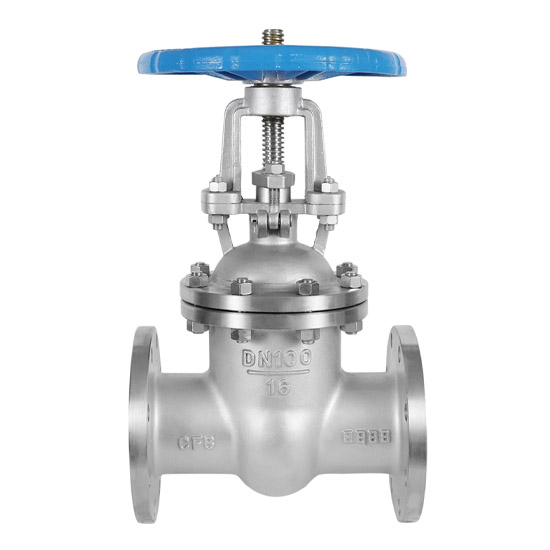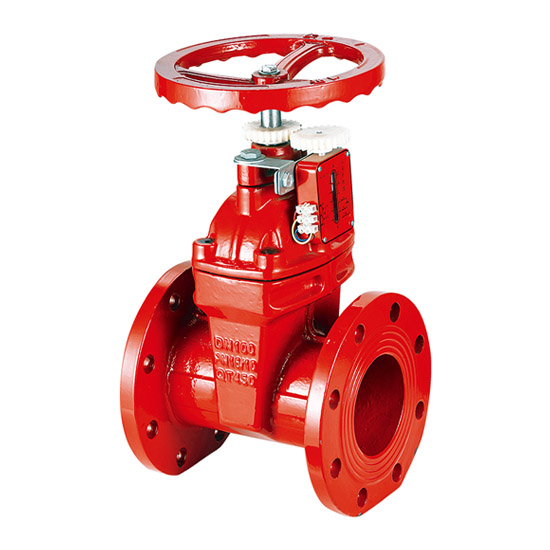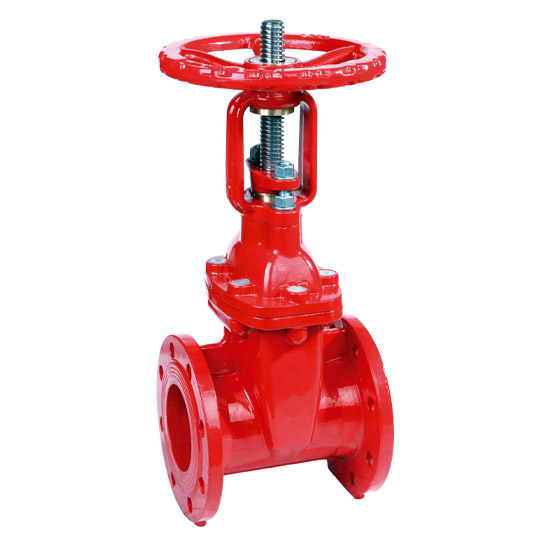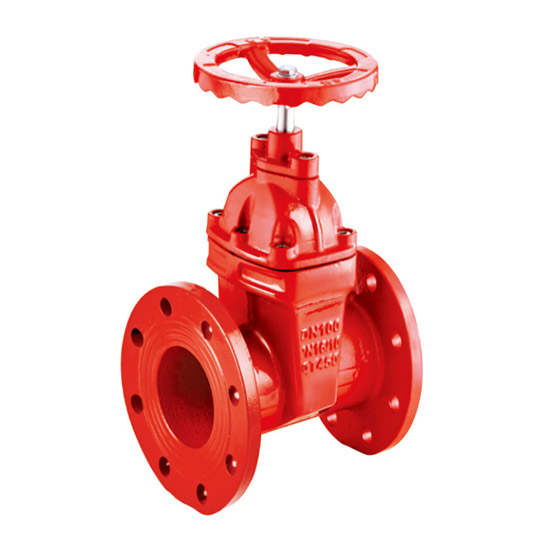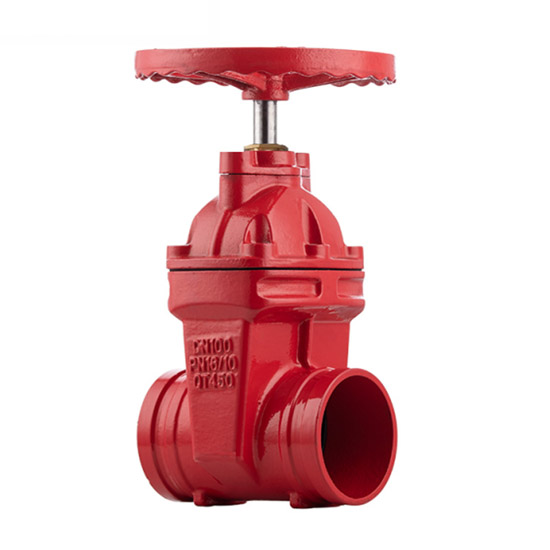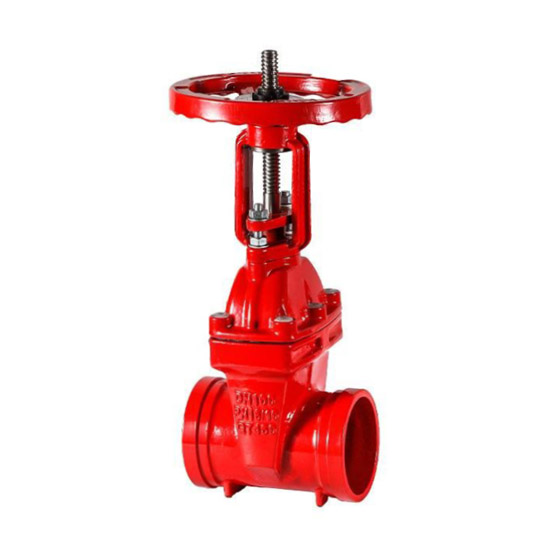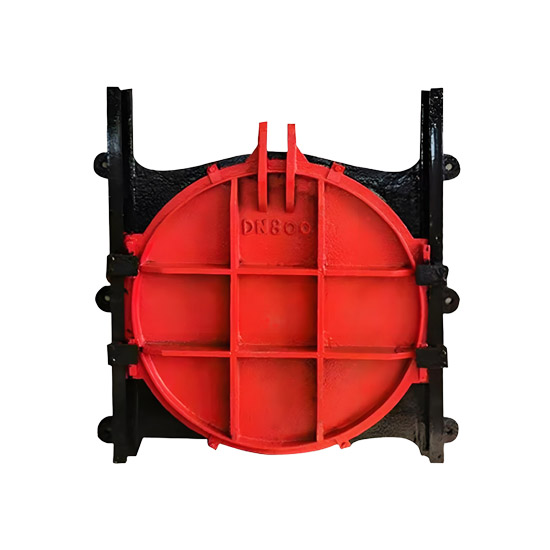I. Product Overview
The stainless steel flanged gate valve is a shut-off valve that controls the flow of media by vertically raising or lowering the gate along the stem. It is integrated into pipeline systems via flanged connections. Key features include:
• All-Stainless Steel Construction: The valve body, bonnet, gate, and stem are all made of austenitic stainless steel (e.g., 304, 316, 316L), offering excellent corrosion resistance. Suitable for water, steam, oil, acid and alkaline solutions, food-grade fluids, and other clean or corrosive media.
• Metal-to-Metal Hard Sealing Design: The sealing surfaces of the gate and seat are typically treated with hard alloy overlay (Stellite) or hardened stainless steel, ensuring zero leakage under high temperature and pressure conditions. Service life exceeds that of conventional soft-seal gate valves.
• Rising Stem Drive System: The stem moves with the gate and is fully exposed (trapezoidal thread drive). The number of handwheel rotations intuitively indicates valve opening, facilitating operation, monitoring, and maintenance.
• Bidirectional Flow Adaptability: No strict flow direction requirement (body arrow is for reference only). Strong bidirectional pressure resistance makes it suitable for complex piping systems with variable flow directions.
• Multiple Actuation Options: Supports manual (handwheel / worm gear), electric, pneumatic, or gearbox drive to meet various automation requirements.
II. Model and Technical Parameters
1. Model Coding System
Example: Z41W-16P
• Z: Gate valve type • 4: Connection type (flanged; alternatives: welded – Z61H, threaded – Z11H) • 1: Structure type (elastic single wedge gate; double gate – Z42H) • W: Sealing surface material (stainless steel body seal; alternatives: Y – hard alloy) • 16: Nominal pressure (PN16, 1.6 MPa) • P: Body material (CF8, 304 stainless steel)
Other common models: • Z41Y (hard alloy seal) • Z941W (electric type) • Z641W (pneumatic type)
2. Technical Parameters
| Item | Parameter Range |
|---|---|
| Nominal Diameter (DN) | DN15~DN1600 mm (larger sizes customizable) |
| Nominal Pressure (PN) | PN1.0~PN25.0 MPa (Class 150~2500) |
| Operating Temperature | -29℃~200℃ (standard stainless steel seal); -29℃~550℃ (Stellite alloy seal) |
| Applicable Media | Water (including particle-laden wastewater), steam, oil, natural gas, nitric acid, acetic acid, urea, sour gas, and other corrosive fluids |
| Strength Test Pressure | 1.5×PN (≥15 min pressure holding without deformation or leakage) |
| Sealing Test Pressure | 1.1×PN (≥15 min bidirectional pressure holding without leakage) |
| Body / Bonnet Material | CF8 (304), CF8M (316), CF3M (316L), Duplex Steel (2205), etc. |
| Gate / Seat Sealing Surface | Stellite alloy overlay, hardened stainless steel (13CrSTL) |
| Stem Material | 2Cr13, 304, 316, nitrided stainless steel (anti-scuffing and corrosion-resistant) |
| Packing Seal | Braided flexible graphite (for high-temperature steam) or reinforced PTFE (high chemical compatibility) |
| Flange Standards | GB/T 9113 (Chinese), ASME B16.5 (American), JIS (Japanese), etc. |
III. Structural Features and Operating Principle
1. Core Component Analysis
• Wedge Gate: Elastic single gate (for small and medium diameters) or rigid double gate (for large diameters with automatic wear compensation). The wedge angle allows self-adjustment to thermal deformation or installation deviation, ensuring bidirectional sealing.
• Metal-to-Metal Hard Sealing Mechanism: Gate and seat are paired with materials of different hardness (seat slightly harder), such as Stellite alloy (HRC45–50) + hardened steel gate, reducing scuffing risk. Medium pressure assists sealing under high pressure; forced wedge fit ensures reliability under low pressure.
• Rising Stem Drive Advantages: – Visual Opening Indication: Exposed stem length directly reflects gate position (fully closed → stem retracted; fully open → stem at top) – Triple Sealing Protection: Flexible graphite packing + metal bellows ring + gland design significantly reduce stem leakage risk – Trapezoidal Thread Efficiency: Handwheel rotation converted to linear motion via nut; worm gear mechanism reduces torque for large-diameter valves
2. Operating Mechanism
• Opening: Counterclockwise rotation of handwheel raises stem, gate lifts off seat, flow path fully opens (flow resistance coefficient ≈0.1)
• Closing: Clockwise rotation lowers gate to seat, wedge surface forced into position + medium pressure self-tightening ensures zero-leakage shut-off. After full opening, reverse 1/4–1/2 turn to compensate thermal expansion and prevent stem lock-up.
IV. Main Technical Standards
1. Compliance Standards
• Design Codes: – GB/T 12234 (Steel Gate Valves) – API 600 – ASME B16.34 (Supplementary Requirements for Forged Steel Gate Valves)
• Test Standards: – GB/T 13927 (General Pressure Test) – API 598
• Flange Connection Standards: – GB/T 9113 (Chinese) – ANSI B16.5 (American)
• Special Certifications: – NACE MR0175 (Resistance to Sulfide Stress Cracking) – ATEX (Explosion Protection) – CRN (Canadian Pressure Vessel Registration)
Hot Tags: Gate Valve /


